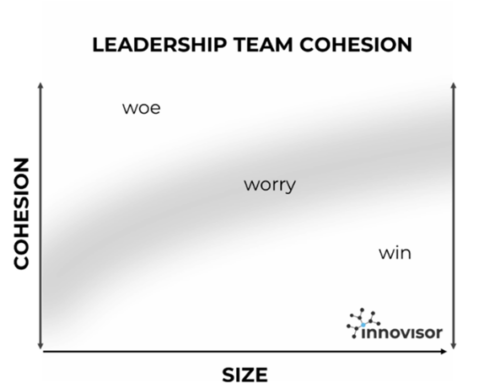Evidence-Based Approach to Diversity & Inclusion
Diversity & Inclusion initiatives are more than only counting demographic or gender headcounts and reporting these metrics in bite-size “diversity” scorecards or dashboards.
These types of metrics are quota-based metrics and will tell you how many women hold a leadership role or how many foreigners are part of the talent pool of a given company. They will not tell you how your Diversity and Inclusion initiatives impact the bottom line of your company.
Support your company’s bottom line with the right D&I metrics

Most companies have shaped their business objectives towards the same notion. When you want to be a global player, it is key to have the ability to continuously foster creativity and to innovate products and services. For this reason, I argue that Diversity and Inclusion initiatives should impact the innovation process.
The intersection of innovation and diversity is not something new. Innovation requires companies to see things differently. And the more options are offered, the more likely it is that an innovative perspective will be available for selection which gives the company the edge in the global market.
And this is what we already see with some companies. They start linking their Diversity & Inclusion initiatives to the company’s innovation strategy.
- EY, one of the largest professional services companies, leverages Diversity and Inclusion to build the highest performing teams in which “the power of different opinions and perspectives are maximized”
- ING Bank, one of the largest financial companies, uses differences to enable them to solve and respond to challenges in different ways. Their Diversity and Inclusion strategy statement argues that “diversity is good for business because different perspectives drive innovation, accelerate growth, and lead to more robust decisions and outcomes”
When you look at these Diversity & Inclusion strategy statements, it is clear we need metrics that measure how a workforce interacts. If we need these different or diverse perspectives, where are people getting their information from? Let me give you an example by introducing you to Maria.
Maria – who just graduated from university – joined the Business Development Unit of a global manufacturing company 12 months ago. In the first two months, she joined various onboarding initiatives, which helped her to understand her role to grow the company.
After 12 months, Maria created a network with people from her Unit and with the people outside her Unit who she met during her onboarding.
Has the company been successful in including Maria in the company’s workforce? Is Maria getting the full benefits from diverse perspectives? My answer is no! In this case – which I have seen within many companies – the interactions in a diverse workforce are left to the individual and by coincidences.
As a result, the company exposes itself to conscious or unconscious biases. The Diversity and Inclusion initiatives should be around a disciplined way to include people in a diverse workforce rather than to manage it as a check-box exercise on quota.
The right metrics to understand how your workplace interact
The key metrics for Diversity and Inclusion initiatives are distance and interaction. These metrics are based on Organizational Network Analysis – a method that helps organizations to understand the interactions within the workforce.
- Distance
The cohesion and agility of an organization are measured via distance. Distance measures how far individuals are from each other in an organizational network. Obviously, a unified organization will have a low average distance – meaning that it can quickly connect to and get the perspectives of the diverse workforce.
Key questions: how coherent is your diverse workforce in its collaboration? Because coherence drives performance. Who are the right people who should be connected to improve cohesion in a diverse workforce?
2. Interaction
The interactions between people should be managed carefully because there are numerous unconscious biases that keep people from interacting with each other. If you are not disciplined about this process, chances are that people are interacting with other people who are just like them.
Key questions: how does interaction flow between areas of diversity such as gender, education, position, location et cetera? What are the invisible diversity barriers which need to be broken down?
Altogether, these metrics bring evidence into the areas where you should be focusing on. This is a key input for your Diversity & Inclusion initiatives. As Jeppe Hansgaard puts this: “people are less likely to act on their conscious or unconscious biases, when the facts are made transparent, and they know that might have to explain their behaviors!” Through this, you can achieve more inclusive behavior in a diverse workforce!
Do you like our articles? Subscribe to our newsletter.








